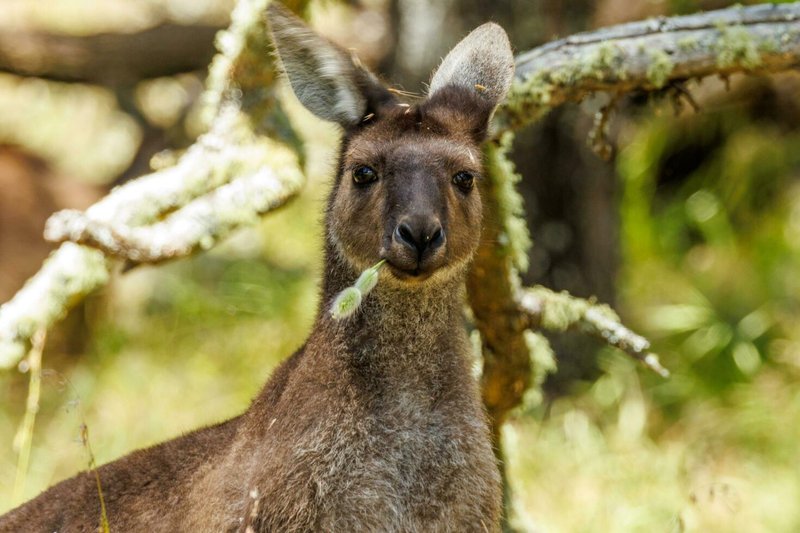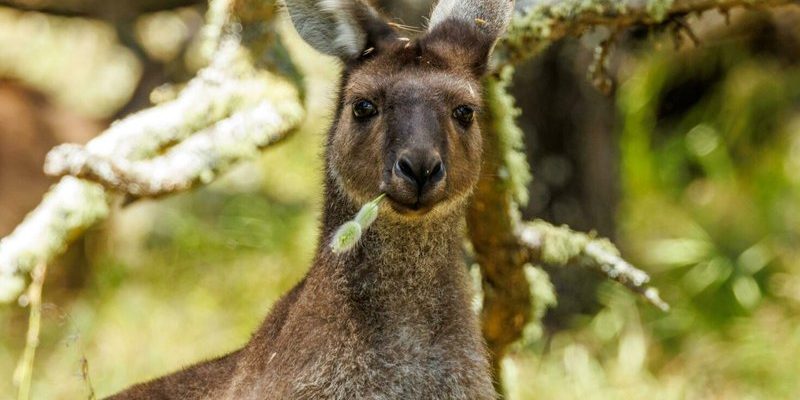
You might picture kangaroos leaping effortlessly across the Australian outback, but the truth is a tad more complicated. From their diet to their social lives, there are many layers to these creatures worth exploring. Let’s dive deep and clear up some of those misunderstandings.
1. Misconception: All Kangaroos Are the Same
One common myth is that all kangaroos are interchangeable. While they do share similarities, like their strong legs and long tails, there are several species of kangaroos, each with its unique characteristics. The Western Grey Kangaroo stands out in many ways.
For starters, they are generally smaller than their larger relatives, like the Red Kangaroo. Western Greys usually reach about 4 to 6 feet in length and weigh between 50 to 120 pounds. Their fur has a distinctive gray color, which helps them blend into their environment.
Consider this: Imagine if you thought all cats were the same just because they’re furry and purr! Just like our feline friends, each kangaroo species has its quirks and charm.
2. Misconception: Kangaroos Are Aggressive
You might think of kangaroos as aggressive creatures, especially after seeing videos of them fighting or intimidating people. Here’s the thing: aggression in kangaroos is often misunderstood.
In reality, Western Grey Kangaroos are generally quite gentle. They prefer to spend their time eating grass and lounging in the sun. However, like many wild animals, they can become defensive if they feel threatened. For instance, a mother kangaroo will fiercely guard her young, and males may engage in fighting during mating season to establish dominance.
Think about how humans react in stressful situations: we might raise our voices or act defensively if we feel cornered. It’s the same for kangaroos. They don’t wake up looking for trouble; they’re just trying to live their best lives.
3. Misconception: Kangaroos Only Eat Grass
When you picture a kangaroo, you might imagine it munching on grass all day. While it’s true that Western Grey Kangaroos primarily graze on grasses, their diet is a bit more varied than you might think.
These kangaroos are herbivores and enjoy a range of plants. In addition to grass, they munch on herbs, leaves, and even some fruits. Their ability to adapt their diet helps them survive in various habitats, from woodlands to open grasslands.
Imagine a buffet where you only eat one dish—you’d get pretty bored. For kangaroos, having a varied diet keeps things interesting and healthy!
4. Misconception: Kangaroos Can’t Walk
It’s an easy assumption to make when you see them hopping around so energetically, but the truth is that they can walk! Western Grey Kangaroos are known for their distinctive hopping, which is their primary means of movement. It’s efficient and allows them to cover long distances quickly.
However, they can move slowly on all fours when necessary, especially while grazing or resting. Picture a person walking briskly versus taking a stroll. Both movements are valid, but one is more suited for speed while the other is more relaxed.
So, if you ever see a kangaroo trotting along, it’s not lost or confused—it’s just taking a leisurely stroll!
5. Misconception: Kangaroos Are Just for Show
It’s easy to think of kangaroos as cute animals that are fun to observe in zoos or documentaries. But honestly, Western Grey Kangaroos play an important role in their ecosystems.
Their grazing habits help maintain grassland health by promoting new growth. Furthermore, they serve as prey for larger predators, such as dingoes. This natural balance is crucial for keeping their habitats healthy and in check.
So the next time you see a kangaroo, remember that they’re more than just a pretty face; they’re part of a larger story in the ecosystem!
6. Misconception: Kangaroos Are Always Found in Australia
While it’s true that kangaroos are iconic to Australia, many people don’t realize that they are also found in some other places. For example, Western Grey Kangaroos can be spotted in parts of Tasmania and even during their travels, sometimes they even wander into neighboring countries.
This expansion often occurs due to habitat changes or food availability. Much like how some birds migrate to different areas for better resources, kangaroos will roam to find what they need to thrive.
So, if you’re thinking of going on a kangaroo-watching adventure, just remember that you may need to broaden your horizon beyond Australia.
7. Misconception: Kangaroos Are Nocturnal Creatures
Many folks think that kangaroos are nocturnal, primarily active at night like some of their wildlife neighbors. Western Grey Kangaroos are actually what we call crepuscular, meaning they’re most active during the early morning and late afternoon.
This behavior helps them avoid the midday heat, which can be brutal in their natural habitats. By being active during cooler times, they can graze comfortably without overheating.
Imagine it’s summer, and you decide to go for a run during the hottest part of the day versus early morning—it’s a no-brainer! Kangaroos have just figured out the best time to do their thing.
8. Misconception: You Can Tame a Kangaroo
Lastly, let’s address the idea that you can just waltz up to a kangaroo and make it your pet. While it’s true that some people raise kangaroos in captivity, they are still wild animals at heart.
Kangaroos carry their instincts with them, making it difficult to truly tame them like a dog or cat. They need plenty of space to roam and the freedom to be themselves. Keeping them confined as pets can lead to health problems and stress for the animal.
It’s like trying to keep a fish out of water. Sure, you can take care of it, but it needs a specific environment to thrive. Instead of trying to tame a kangaroo, celebrate them in their natural habitat where they can express their unique behaviors.
In conclusion, understanding the Western Grey Kangaroo means separating fact from fiction. These fascinating creatures are a vital part of their ecosystem and deserve our respect. Next time you see a kangaroo, remember all the interesting truths behind their behavior and lifestyle. Shifting your perspective can lead to a deeper appreciation for these remarkable animals!

